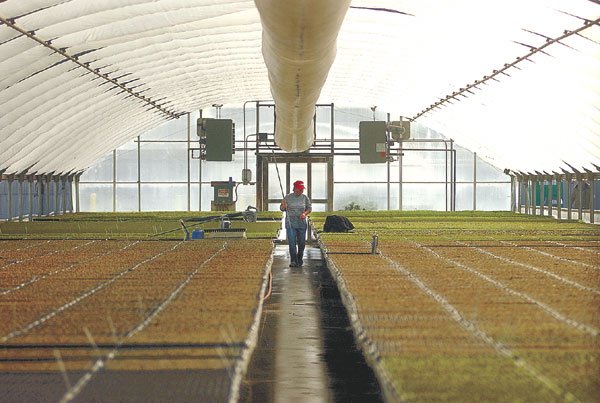Skyrocketing energy costs will cause some greenhouses to go
unused this winter
San Martin – Energy prices are driving David Lau out of business.
Lau has been growing flowers at his San Martin nursery for 30 years, but foreign competition compounded by escalating natural gas prices have him ready to hang up his pruning shears.
“It is isn’t worth it, everything costs too much money,” Lau said. “Energy prices are going really high and I can’t afford to heat the greenhouse.”
Lau has tried to lease or sell his chrysanthemum operation but hasn’t had any luck. His greenhouse is one of many around South County that will go unused this winter as local growers – especially small family nurseries – struggle with high heating bills an and unforgiving marketplace with no room to recover costs.
“That’s the trend that has been happening with all the growers around here,” said Jane Jackson, who leases greenhouses from Zen Garden Nursery in Gilroy and is head of sales for San Martin Roses. “They’ve been forced to not use heat in the wintertime. We’ve cut down. We have three ranges and we can’t afford it.”
Jackson is keeping the heat off in one of her greenhouses this winter and hoping that a crop of snapdragons will mature before cold sets in. When nighttime temperatures dip into the 30s, heating bills skyrocket. And it doesn’t help that the wholesale prices of most flowers haven’t budged in decades.
“Even a drop of two degrees really makes a lot of difference. The bill can go up $500 in a month,” Jackson said. “And we’re getting paid the same prices as in the ’70s.”
According to Randy Costa, vice president of HeadStart Nursery in Gilroy, poinsettia plants are fetching the same price as they did in 1987, but they’re still good business and worth turning up the thermostat.
“We can’t really turn down the heat because they won’t turn red in time for Christmas,” Costa said. “We would have missed the window to sell those.”
Costa said that he had just finished writing a check for nearly $100,000 to cover December’s heating bills, about twice what he paid last year. But prices have been climbing for years, inspiring conservation efforts at the nursery. Growers gamble they can get high-quality crops with less heat and are always looking to save on labor and other costs.
“We try to do everything we can to conserve energy,” Costa said. “We check all the greenhouses to make sure they’re as buttoned up as they can be. We turn down the heat on crops we think we can get away with it and give them a few more days to grow. But as we get busier the greenhouses are full and it’s hard to add more crop time.”
HeadStart is better off than many nurseries because it’s a large operation that sells a lot of row crops to farms in addition to its flower sales. The nursery owns land in southern California, where it grows bell peppers in the winter, and many of it’s products such as celery and cauliflower do well in cooler climates. The nursery also sells a lot of flower seedlings.
“The diversification of the products we sell does help us,” Costa said. “We do a lot of different things and we do them year-round.”
But for Lau Nursery and many others like it, the flower business has become seasonal, with winter bringing an unwanted vacation.
“I don’t use my greenhouse in the wintertime because I can’t afford it,” Lau said. “I still haven’t decided what to do about it, but I’m losing money every year and I’m tired of it.”















